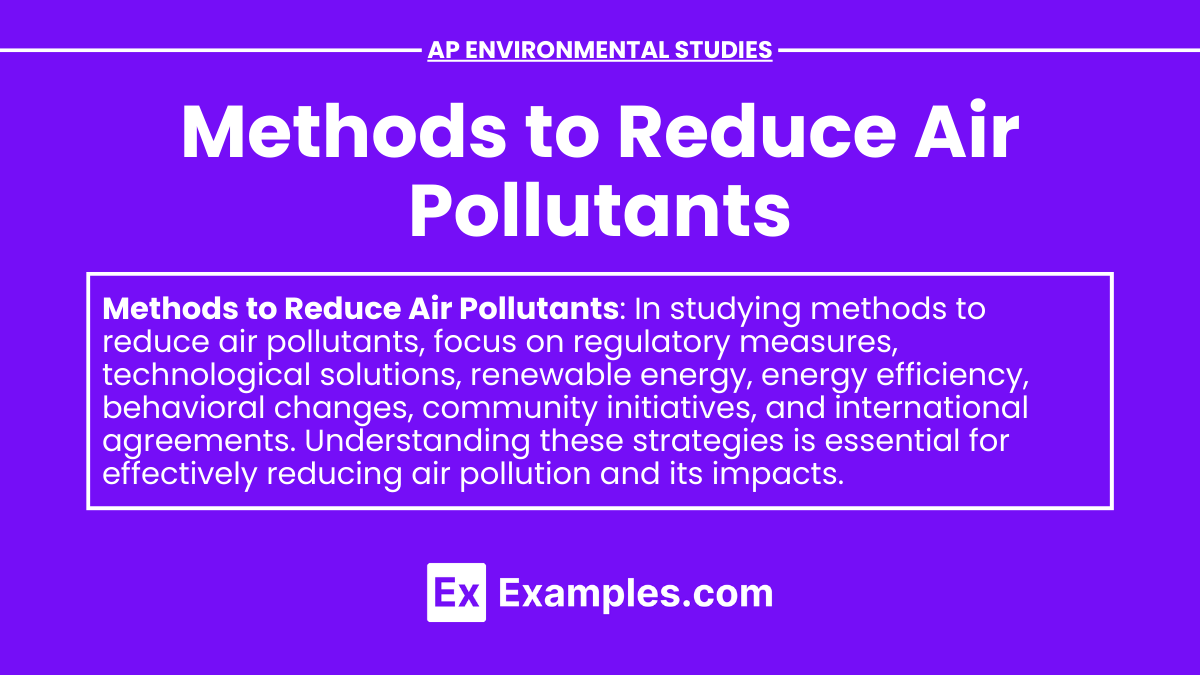Reducing air pollutants is crucial in AP Environmental Science as it directly impacts our ecology, ecosystem, and biodiversity by preserving the delicate balance within the biosphere. Effective methods include regulatory measures, technological innovations, behavioral changes, and international cooperation. These strategies help mitigate the adverse effects of pollutants, protect human health, and sustain the integrity of ecosystems. Understanding these methods is essential for safeguarding our environment and promoting biodiversity.
Free AP Environmental Science Practice Test
Learning Objectives
By studying methods to reduce air pollutants, students will understand how to protect organisms from harmful effects, mitigate climate changes, and preserve flora and fauna. They will learn about regulatory measures, technological innovations, and behavioral changes that reduce emissions and improve air quality. This knowledge is crucial for developing strategies to safeguard human health and environmental sustainability, ensuring the well-being of diverse organisms and the stability of our climate.
Regulatory Measures
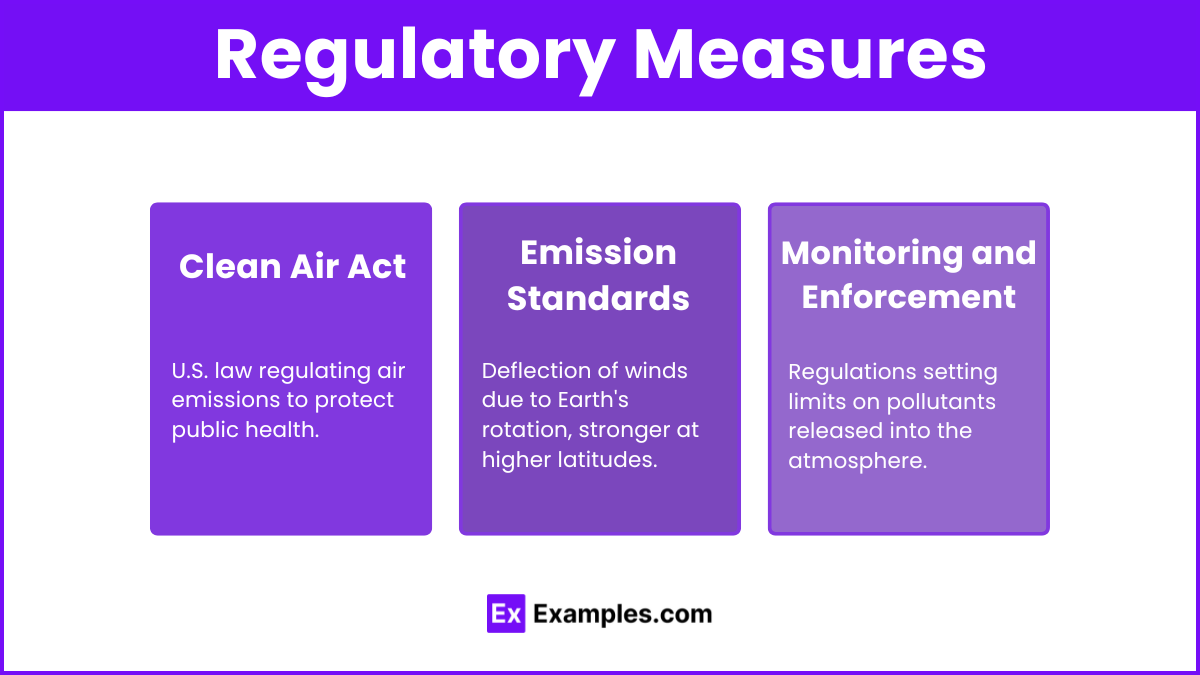
Clean Air Act
Description: A comprehensive federal law that regulates air emissions from stationary and mobile sources in the United States.
Impact: Sets National Ambient Air Quality Standards (NAAQS) for pollutants considered harmful to public health and the environment.
Emission Standards
Vehicle Emission Standards: Regulations to control exhaust emissions from cars and trucks.
Industrial Emission Standards: Limits on the amount of specific pollutants that industries can release into the atmosphere.
Monitoring and Enforcement
Air Quality Monitoring: Continuous monitoring of air quality to ensure compliance with standards.
Penalties for Non-compliance: Imposing fines and other penalties on entities that violate air quality regulations.
Technological Solutions
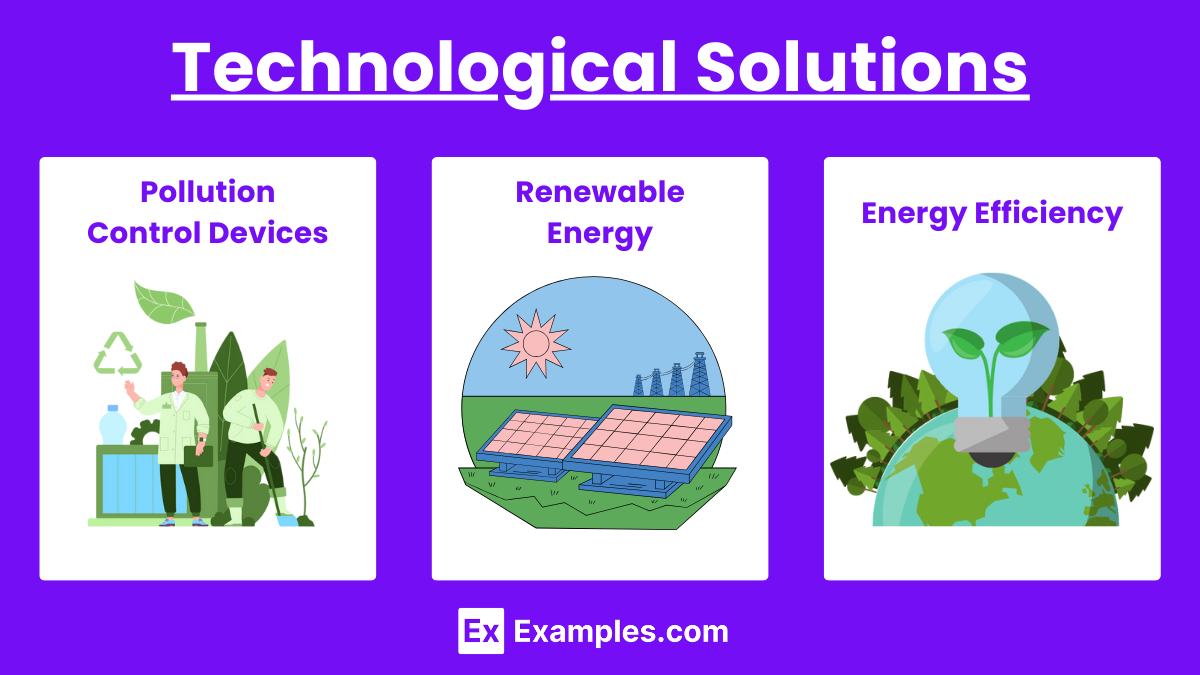
Pollution Control Devices
Catalytic Converters: Reduce emissions of CO, NOₓ, and hydrocarbons in vehicle exhaust systems.
Electrostatic Precipitators: Remove particulates from industrial emissions by charging particles and collecting them on plates.
Scrubbers: Remove SO₂ and other acidic gases from power plant emissions.
Renewable Energy
Solar Power: Reduces reliance on fossil fuels, thus lowering emissions of CO₂ and other pollutants.
Wind Power: Provides a clean alternative to coal and natural gas power plants.
Hydropower: Generates electricity without emitting pollutants, although it can have other environmental impacts.
Energy Efficiency
Energy-efficient Appliances: Use less energy, reducing the demand on power plants.
Building Insulation: Improves energy efficiency by reducing the need for heating and cooling.
LED Lighting: Consumes less energy and has a longer lifespan than traditional incandescent bulbs.
Behavioral Changes
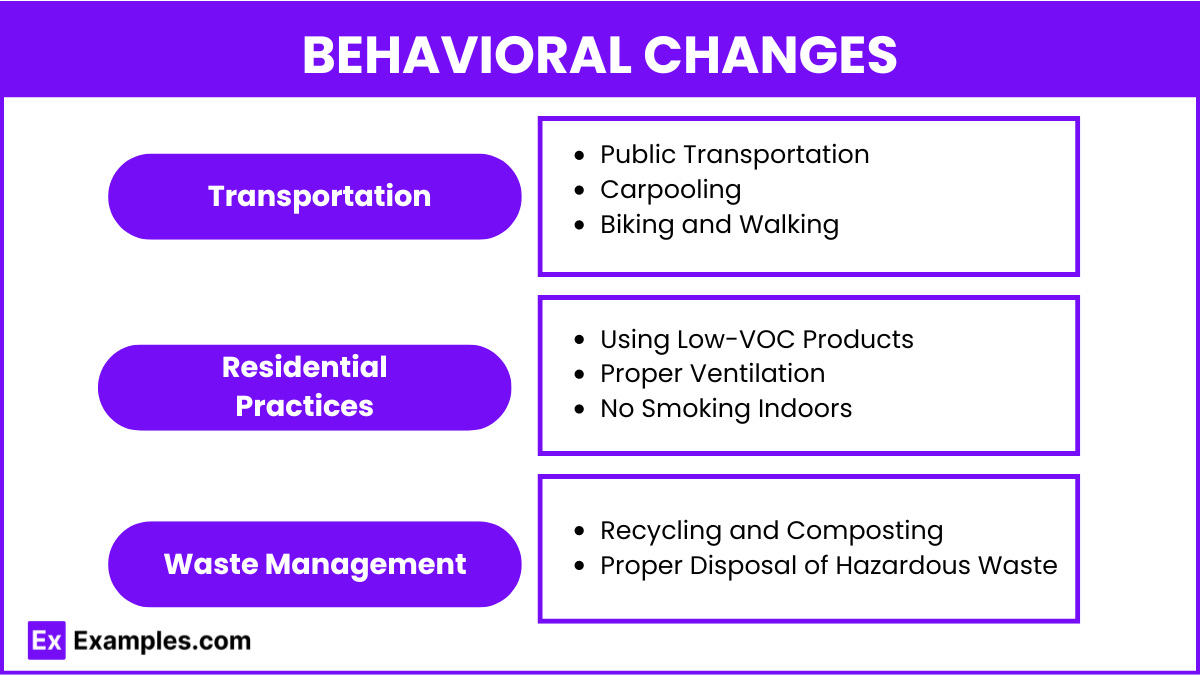
Transportation
Public Transportation: Reduces the number of individual vehicles on the road, decreasing overall emissions.
Carpooling: Sharing rides with others to reduce the number of vehicles in use.
Biking and Walking: Zero-emission alternatives to driving.
Residential Practices
Using Low-VOC Products: Choosing paints, cleaning agents, and other products that emit fewer volatile organic compounds.
Proper Ventilation: Ensuring good air circulation to reduce indoor pollutant concentrations.
No Smoking Indoors: Eliminating indoor smoking to protect air quality.
Waste Management
Recycling and Composting: Reduces the amount of waste sent to landfills, where it can decompose and release methane.
Proper Disposal of Hazardous Waste: Prevents harmful chemicals from entering the air and water.
Community Initiatives
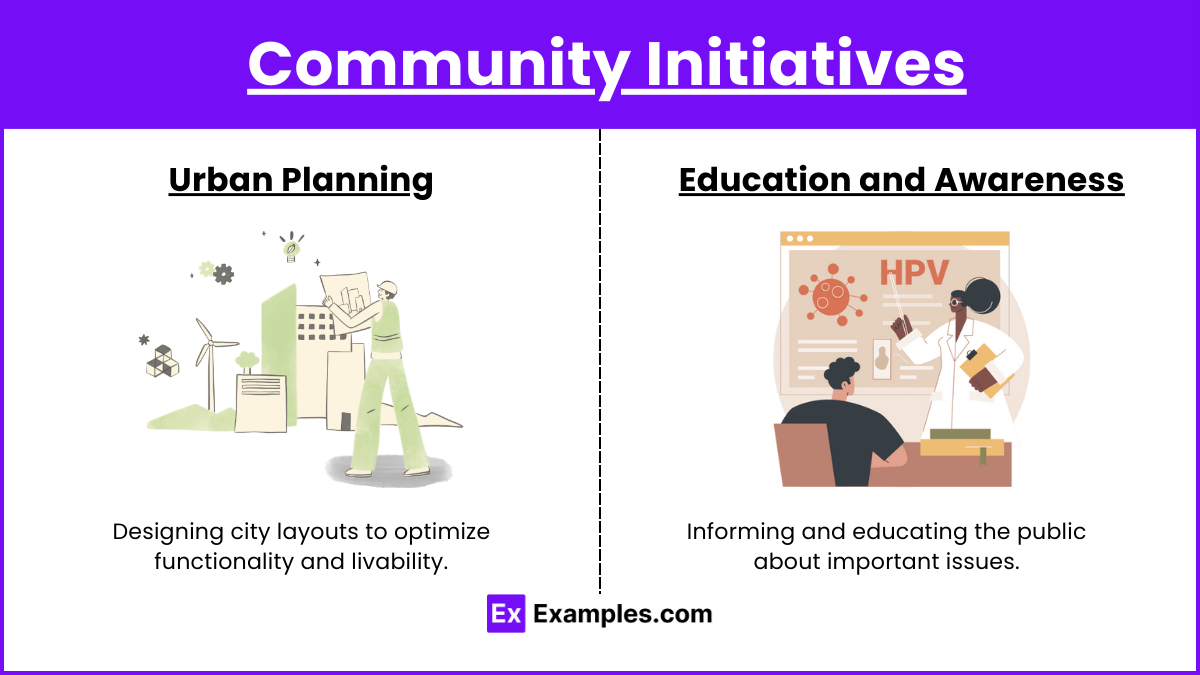
Urban Planning
Green Spaces: Parks and trees help absorb CO₂ and other pollutants.
Public Transportation Infrastructure: Development of efficient and accessible public transit systems.
Walkable Communities: Designing neighborhoods to encourage walking and reduce the need for driving.
Education and Awareness
Public Awareness Campaigns: Educating the public about the sources and effects of air pollution and ways to reduce it.
School Programs: Incorporating environmental education into school curricula to raise awareness from a young age.
International Efforts
Agreements and Protocols
Kyoto Protocol: International treaty committing countries to reduce greenhouse gas emissions.
Paris Agreement: A global pact to limit global warming to below 2°C above pre-industrial levels.
Montreal Protocol: Aimed at phasing out substances that deplete the ozone layer.
Collaborative Projects
Clean Air Asia: A network that promotes better air quality and livable cities across Asia.
UN Environment Programme (UNEP): Coordinates international efforts to tackle air pollution and other environmental issues.

